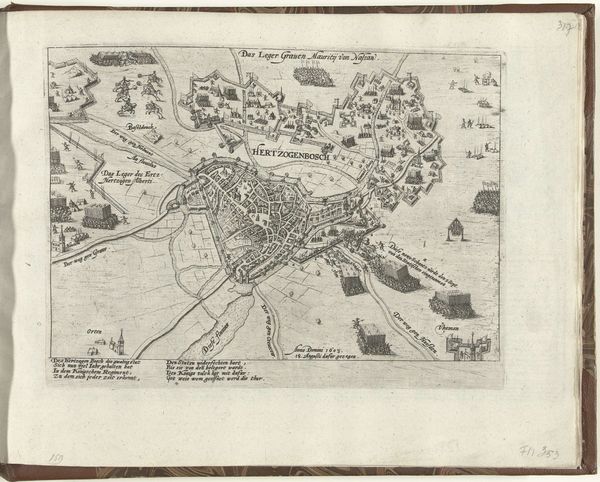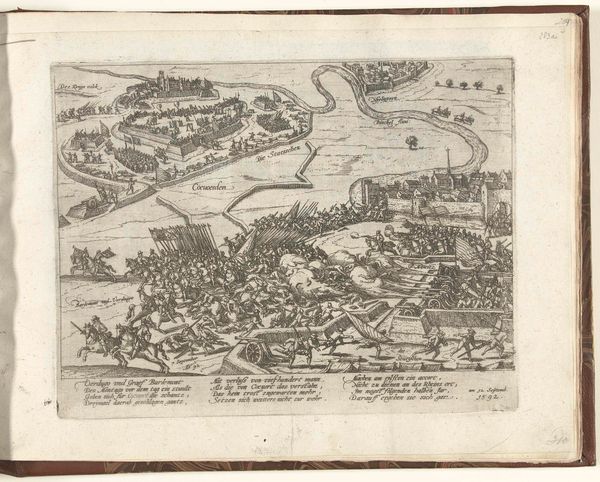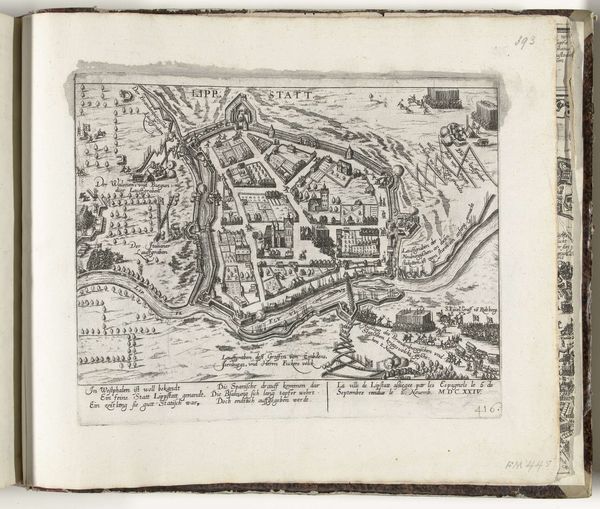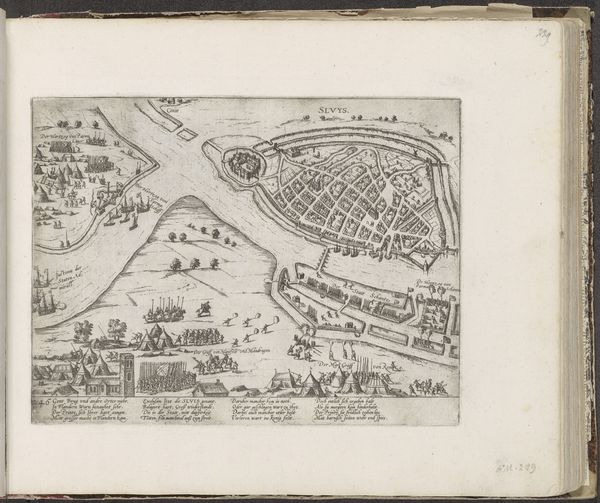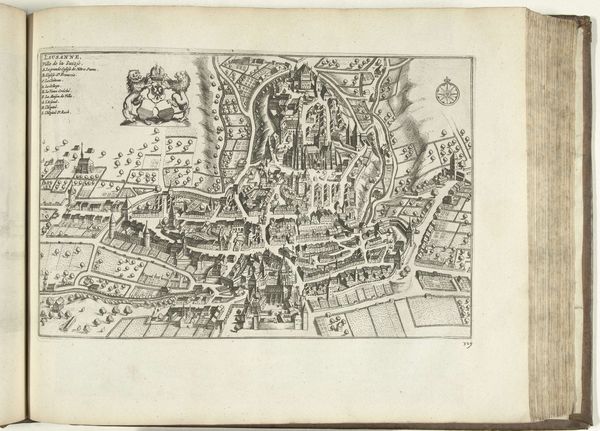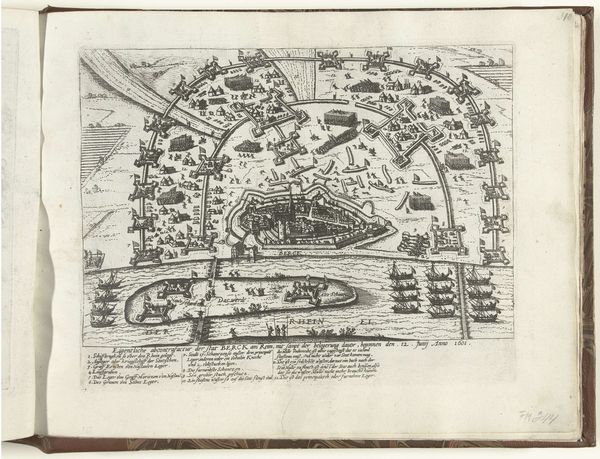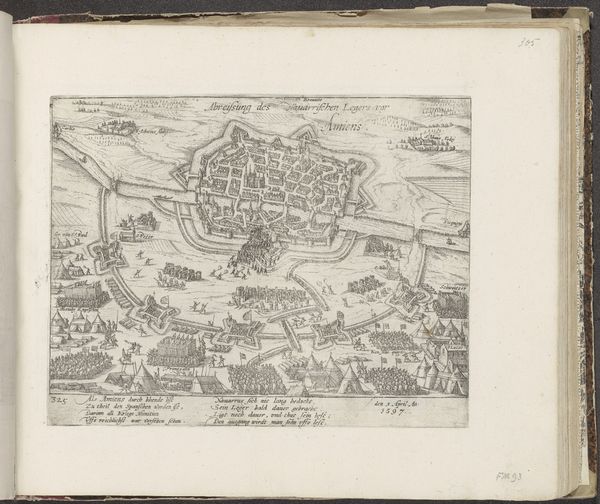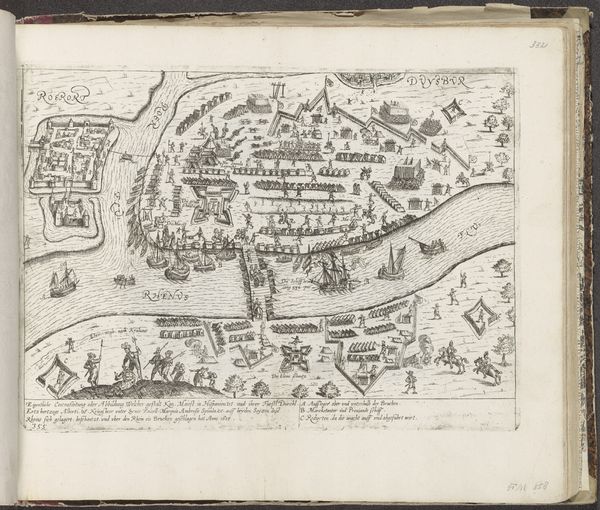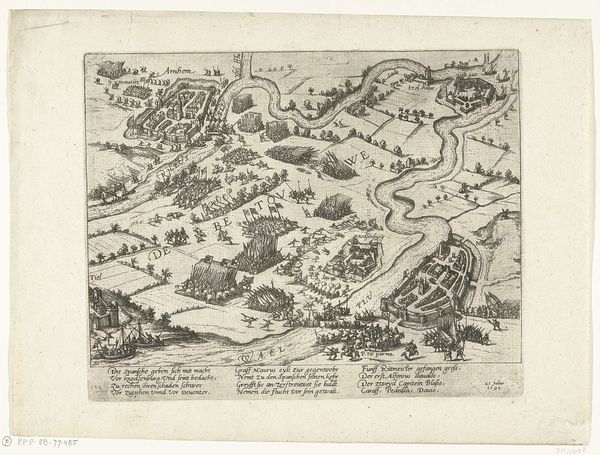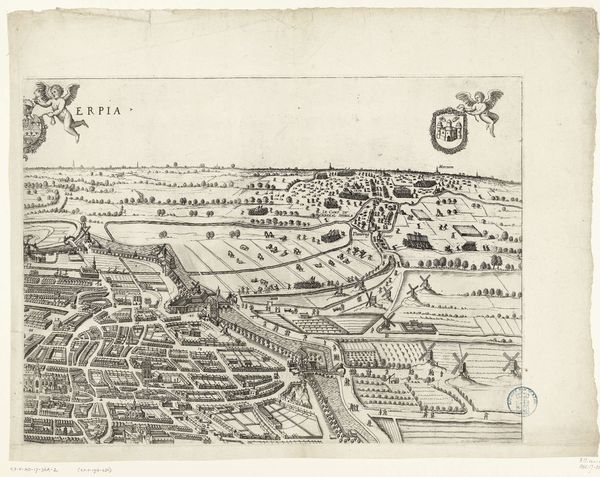
drawing, print, ink, engraving
#
drawing
#
pen drawing
# print
#
landscape
#
mannerism
#
ink
#
cityscape
#
history-painting
#
engraving
Dimensions: height 210 mm, width 280 mm
Copyright: Rijks Museum: Open Domain
Curator: Here we have an engraving by Frans Hogenberg, likely created between 1594 and 1596. The work is titled "Inname van Groningen, 1594," which translates to "The Capture of Groningen, 1594." Editor: It’s fascinating to look at the chaotic scene, and I think its frantic energy does a good job depicting the intensity of a city under siege. It’s predominantly grayscale, lending a certain gravity and a feeling of historical distance. Curator: Absolutely. What we're seeing is a visual document of a pivotal moment during the Eighty Years' War. Hogenberg’s print is part of a larger series documenting key events and figures. It served, in its time, almost as a contemporary news illustration, helping to shape public understanding. Editor: It reminds me of how visual imagery, like this print, could be a tool for shaping political narratives. Whose perspectives are highlighted, whose are sidelined? These prints, viewed by people across different social classes, had the ability to incite patriotism or sow discord. Where do you think agency truly lies within such historical events, considering the societal factors at play? Curator: A critical question. The artist frames Prince Maurits as the clear protagonist; he represents the burgeoning Dutch Republic fighting for liberation from Spanish rule. The figures who look powerless are of course the residents. However, such images contribute to nation-building by solidifying collective identities. Editor: It also prompts reflections on conflict today. We might consider how such art was involved in dehumanizing enemies. Today we can analyze it alongside postcolonial theory and discourses of nationalism and see their relationship with power structures. It is a poignant reflection on how deeply these conflicts have historically influenced socio-political views and values. Curator: I think that’s right, and Hogenberg’s engraving offers us insights not only into the events themselves, but also how they were perceived and disseminated through print culture. Editor: This makes one ponder on the influence of visuals in framing the political dialogue then, and how visual imagery persists today in shaping ideologies.
Comments
No comments
Be the first to comment and join the conversation on the ultimate creative platform.
